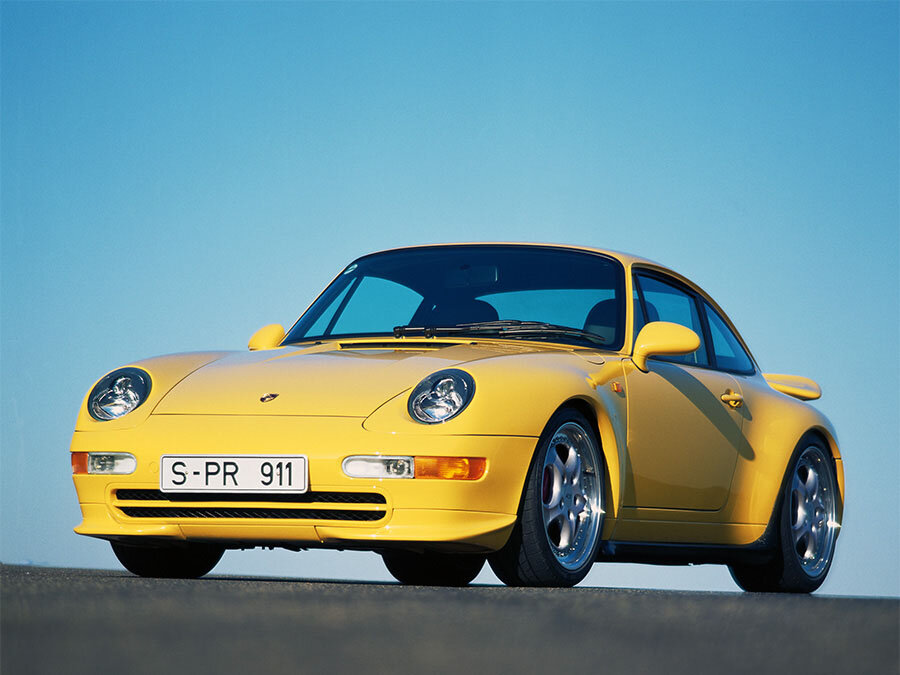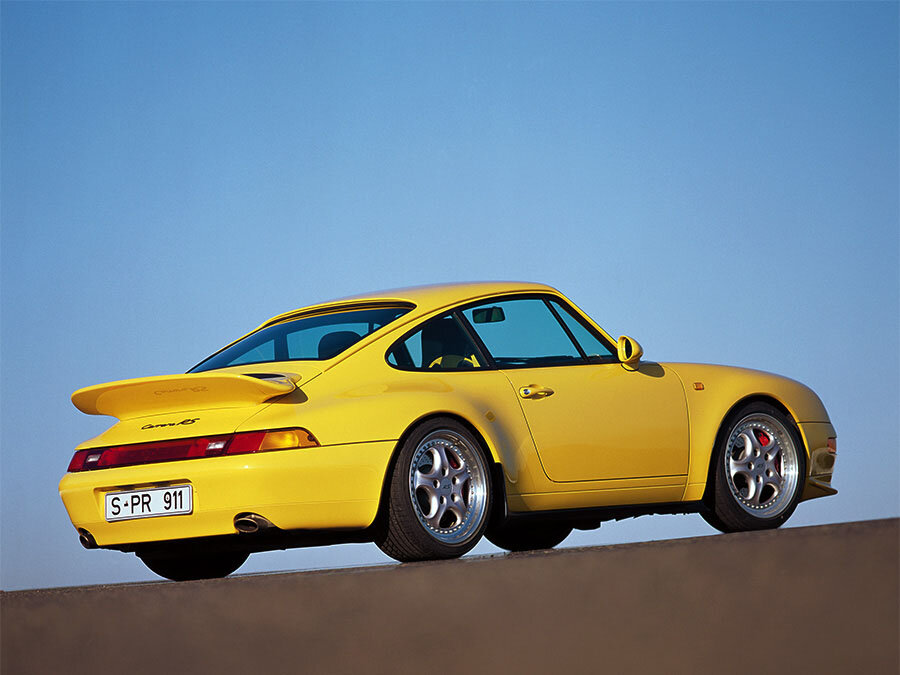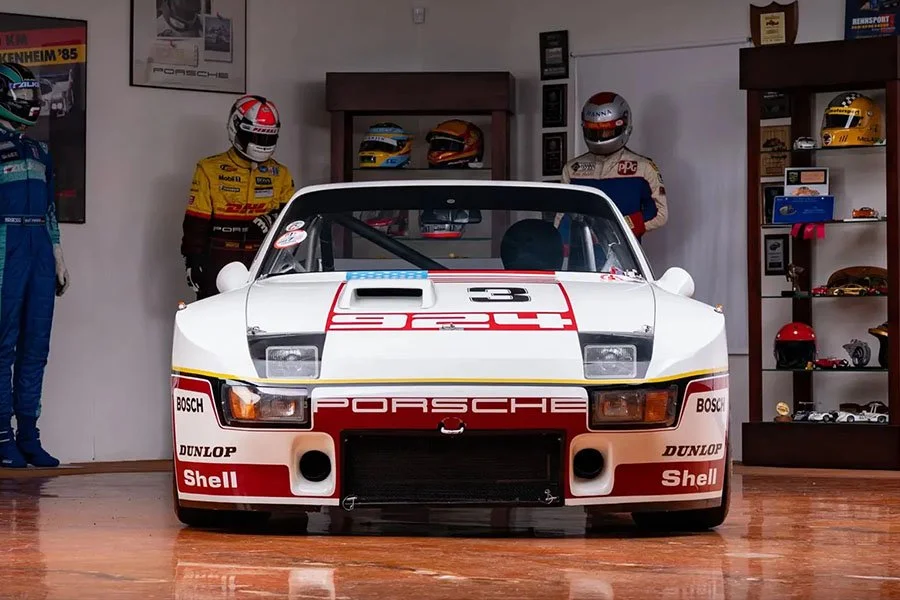Guide: Porsche 911 3.8 Carrera RS (993) - a Historical & Technical Appraisal
/BACKGROUND
After a 19 year gap, the 911 Carrera RS made a welcome return in 1992.
Although not universally well received on account of its overly harsh ride, the new 964-based RS nevertheless sold quite well. Over 2000 were built between 1991 and 1992; this was an especially good number considering the recessionary mood of the time.
By early 1995, Porsche was emerging from a troubled few years. The new 993 had won critical acclaim and order books were starting to fill once again. Markets had turned from downbeat to optimistic and an all-new model, the Boxster, would soon be released to replace the unpopular 968.
To complement the two and four-wheel drive 993 Carreras that were available in Coupe and Cabriolet body styles, Porsche launched the new RS variant at the Amsterdam Motor Show in February 1995.
Available only as a rear-wheel drive Coupe (and not legal for sale in the US), the RS was the ultimate normally-aspirated 911.
Lighter, faster and more aggressively styled than those other 993s, this latest iteration of the fabled Carrera RS also addressed the criticism levelled at its unrefined predecessor.
Although not designed purely for homologation, Porsche knew a 1000 car production run would see the RS approved to compete in the N/GT competition class. This figure was ultimately met with ease, but Porsche’s main racing focus lay with the turbocharged 993 GT.
When purchasing a Carrera RS, buyers could choose from one of three variations. Option code M001 was for an RSR Cup racing car, M002 was a normal RS road car and M003 was the hardcore RS Club Sport.
CHASSIS
The 993’s steel bodyshell was already a big improvement on the outgoing 964. Porsche claimed it to be 20% stiffer than the outgoing 964.
Each 993 Carrera RS was built around a seam-welded non-sunroof bodyshell.
Like all 993s, the RS came with a MacPherson strut assembly at the front and multi-link arrangement at the back.
Performance modifications made to this particular derivative included a cross-brace between the two front strut towers, ball-joint mountings for the spring/damper units, thicker and fully adjustable anti-roll bars and stiffer track rods.
Stiffer springs were also used and the ride-height was lowered by 30mm at the front and 40mm at the rear.
Cross-drilled and ventilated brakes with four-piston calipers were sourced from the 993 Turbo. The discs measured 322mm all round which compared to 304mm at the front and 299mm at the rear for the standard Carrera.
Bigger wheels were also fitted; the new three-piece split rim alloys were supplied by Speedline and had an 18-inch diameter. They measured 8-inches wide at the front, 10-inches wide at the back and originally came shod with Michelin tyres.
ENGINE / TRANSMISSION
The RS was the first 993 to come with Porsche’s new 3.8-litre VarioRam engine. The VarioRam system used a variable length intake to boost torque throughout the lower and mid-range.
Designated Type M64/20, the RS power unit was another all-alloy Flat 6 with single overhead camshafts, two valves per cylinder and dry-sump lubrication.
Cylinder bore was enlarged from 100mm to 102mm while stroke stayed at 76.4mm. The displacement of 3746cc represented a gain of 146cc over the standard 3.6-litre motor.
The 11.5:1 compression ratio was carried over along with Bosch Motronic M2.10 engine management.
RS-specific upgrades included bigger intake and exhaust valves and a strengthened valve drive mechanism. There was also a re-mapped ECU and dual mass flywheel to reduce vibration.
All told, these changes resulted in a 28bhp gain over the standard Carrera. Peak output was now 300bhp at 6500rpm and 262lb-ft at 5400rpm.
The normal 993 six-speed gearbox was given higher ratios on the first three gears and a new type number; G50/31.
Transmission was via a Sachs clutch and limited-slip differential. There was no Tiptronic option.
BODYWORK
Cosmetically, all four wheelarches were subtly rolled to accommodate the bigger Speedline wheels.
To save weight, thinner glass was used along with a lightweight aluminium front lid.
New lower quarter panels with wraparound spoilers were installed at the front. They were painted body colour as was the special rear spoiler that was permanently fixed in position.
To give the car a slender profile, the deep new side skirts were finished in matt black at their base.
The 993 was already a handsome design but the cosmetic modifications made to the RS elevated it to a new level. The discrete spoilers, bulbous wheelarches and bigger rims arguably made it the best looking 993 of all.
INTERIOR
Inside, black leather Recaro bucket seats usually came with grey centres and body coloured backs.
Seat belts were also often coloured to match the exterior.
Door trim panels were simplified for lightness and the combined storage bin / armrest / grab handle was discarded. Instead, there was just a basic canvas loop along with a plastic catch.
A small diameter three-spoke steering wheel was fitted but the instrumentation and switchgear remained unchanged.
To save weight, the rear seats were deleted along with the airbags, most of the sound insulation, the central locking and the electric mirrors.
An interior light from the old 911 3.2 Speedster was installed along with a smaller 1.2-litre washer bottle (down from 6.5-litres).
Electric windows and a stereo were standard.
WEIGHT / PERFORMANCE
In M002 trim, the Carrera RS weighed 1320kg. It had a top speed of 173mph and 0-62mph time of five seconds.
The new car also drove much better than the old 964 RS thanks to its more compliant ride and improved handling.
OPTIONS
Customers could enhance their cars with a variety of optional extras.
Comfort features included air-conditioning and normal leather sports seats instead of the Recaro buckets. Driver and passenger airbags were also available along with a top-tinted windscreen. When the driver airbag option was specified, a standard four-spoke steering wheel replaced the small diameter three-spoke item.
The optional RSR aero kit comprised a wraparound full width front spoiler and adjustable dual plane rear wing.
M003 CLUB SPORT
The Club Sport pack (option code M003) included the RSR spoilers and an even lighter specification.
Cockpits were fully stripped of all interior trim - even the passenger sun visor was discarded.
Porsche then added a welded-in roll cage, fabric bucket seats with six-point harnesses, a fire extinguisher and RSR front strut brace. Seats and windows became manually operated.
Other changes included torsional vibration dampers instead of the dual mass flywheel and a G50/32 gearbox with vented clutch chamber.
All told, the Club Sport pack saved an additional 50kg.
However, it was possible to request practically any combination of parts. For example, some cars came with nearly all the Club Sport equipment plus a carpeted interior, electric windows, leather upholstery and air-conditioning.
PRODUCTION
RS production started in late 1994 and ran until early 1996. 1104 were built including 49 right-hand drive vehicles for the UK.
As the subsequent 996 switched to a water-cooled engine, the 993 Carrera RS went down in history as the most potent normally-aspirated air-cooled 911 ever built.
Text copyright: Supercar Nostalgia
Photo copyright: Porsche - https://www.porsche.com


































